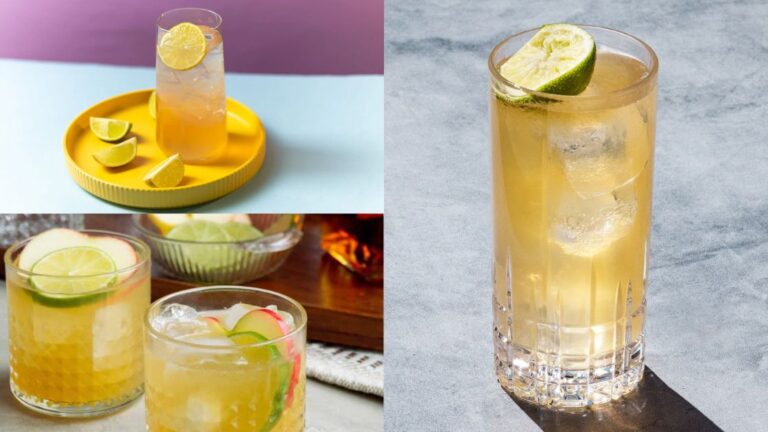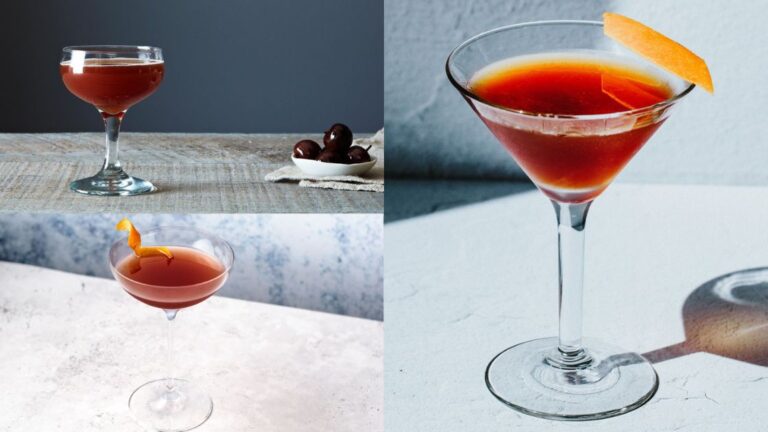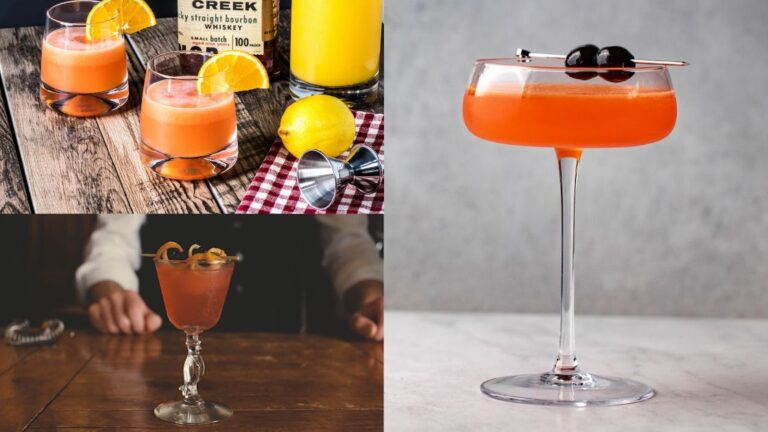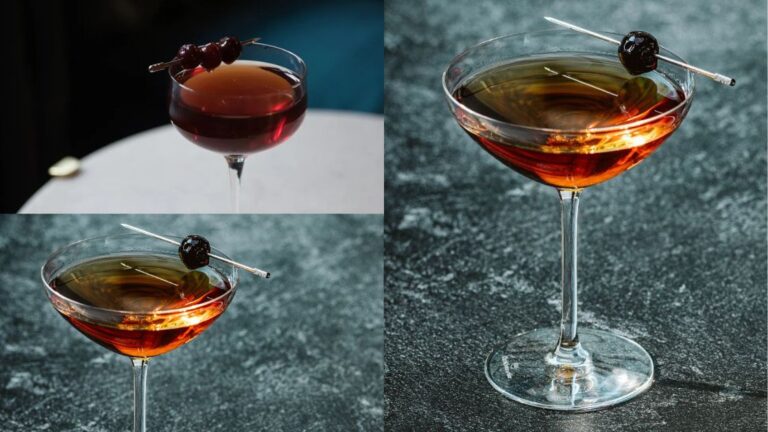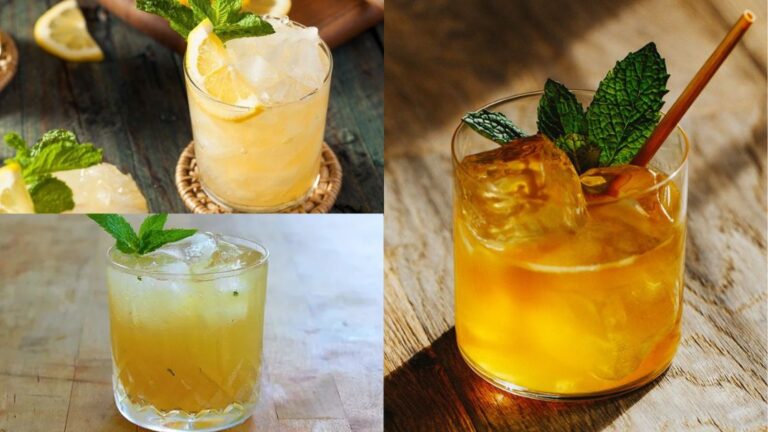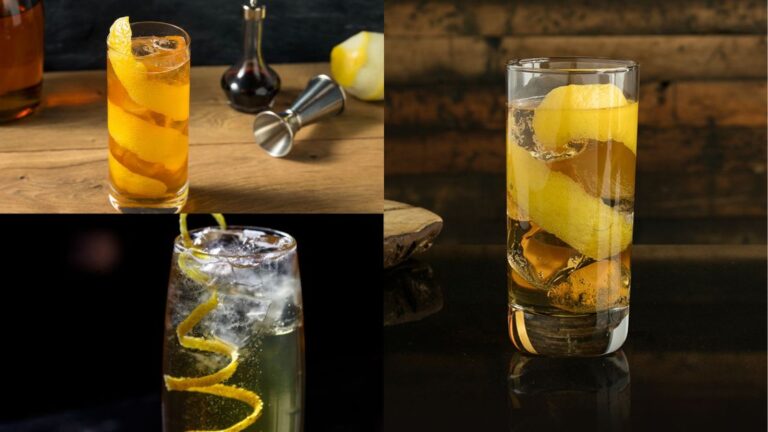If whiskey were a person, it would be the ultimate global citizen—rooted in tradition, yet wildly diverse in its expression. Whether you’re a seasoned connoisseur or just starting to dip your toes into the amber pool, one thing’s for sure: every bottle has a story, and every sip is a journey. From the smoky intensity of Islay Scotch to the caramel smoothness of a classic Bourbon, whiskey offers a taste tour across continents and cultures. Ready to explore this rich world of flavors? Let’s dive into what makes each type of whiskey unique, and uncover the secrets behind your next favorite pour.
Exploring Whiskey Categories
So you’re dipping your toes in the whiskey pool, huh? Get ready for a taste trip through two of the big-league whiskey players: Single Malt Scotch and Bourbon. Each one’s got its own story and taste to tell.
Single Malt Scotch Whisky
Single Malt Scotch hails from the misty lands of Scotland. It’s a special brew made entirely from malted barley and crafted by a lone distillery. This purist approach gives it a flavor that’s both deep and consistent, a big hit with folks who know their whiskey.
Scotch is a bit of a chameleon, with its taste shaped by where it’s born. Here’s a quick flavor tour:
- Islay Whiskies: These guys will whack you with peat and smoke.
- Speyside Whiskies: Think of these as the smooth talkers: light and sweet.
Here’s a flavor snapshot of Scotland’s whisky regions:
| Region | Flavor Profile |
|---|---|
| Islay | Smoky, Peaty |
| Speyside | Light, Sweet |
| Highlands | Floral, Heathery |
| Lowlands | Light, Fresh |
| Campbeltown | Maritime, Briny |
| Islands | Varies, often Peaty |
Scotch takes its time to soak in oak barrels for a good three years or more, which is where a lot of its magic happens. Curious for more? Dive into single malt whiskey.
Bourbon Whiskey
And then there’s Bourbon, the all-American dream. It’s got its own set of rules—gotta be brewed in the USA and packed with at least 51% corn, which makes it naturally sweeter.
This sweet treat can change its stripes depending on the rest of its grain crew:
- High Rye Bourbon: For those who like a kick with their sip.
- Wheated Bourbon: For when you’re in the mood for smooth and sweet.
Bourbon owes much of its character to the new charred oak barrels that it cozies up in, resulting in those rich deep flavors that hit you right in the taste buds. Want the skinny on how it sizes up to other whiskeys? Skip over to our bourbon vs. whiskey page.
| Type | Primary Grain | Characteristics |
|---|---|---|
| Standard | Corn (51%+) | Sweet, Caramel, Vanilla |
| High Rye | Corn & Rye | Spicy, Bold |
| Wheated | Corn & Wheat | Smooth, Sweet |
Exploring Bourbon is like opening a box of chocolate—each sip holds a surprise based on its grain mix. It might be sweeter than its Scottish cousin, but don’t let that fool you. There’s plenty to discover here.
Now that you’ve got the lowdown on these muddy waters, keep your whiskey wanderlust going with some killer whiskey cocktail recipes or get the scoop on top whiskey brands. Cheers to your whiskey journey!
Distinct Characteristics
If you’re a fan of the good stuff, you know that every type of whiskey brings its own vibe to the party. Getting to know these quirks can make each sip even more delightful. Today, let’s take a closer look at what makes Islay whiskies and the bourbon mash bill so special.
Islay Whiskies
Coming straight from the island of Islay off Scotland’s west coast, these whiskies are famous for their bold, smoky character. They’re made with malted barley dried over fires fueled by peat. And if you’re wondering what peat tastes like—think earthy, smoky, and a bit like a campfire in your mouth with a whiff of medicine. Yeah, it’s an acquired taste.
| Distillery | Notable Whiskies | Flavor Profile |
|---|---|---|
| Laphroaig | Laphroaig 10 | Super smoky, peaty, a bit medicinal |
| Ardbeg | Ardbeg 10 | Smoky, peaty with a hint of citrus |
| Bruichladdich | Classic Laddie | Light, no peat, floral notes |
But don’t get it twisted—not all Islay whiskies will blow your socks off with smokiness. Take Bruichladdich’s Classic Laddie, for instance. It skips on the peat, going for fresh and floral instead. This range of flavors on the Islay island makes it a playground for whiskey fans. Wanna know more about other scotch varieties? Head on over to our single malt whiskey page.
Bourbon Mash Bill
Now let’s chat bourbon. What makes bourbon stand out? It’s all about the mash bill, which is essentially the mix of grains used in production. Legally, bourbon’s gotta have at least 51% corn. The rest usually includes barley, rye, or wheat.
| Brand | Corn (%) | Rye (%) | Barley (%) | Flavor Notes |
|---|---|---|---|---|
| Yellowstone Select | 75 | 13 | 12 | Tastes like leathered cherries and smoked caramel |
| Maker’s Mark | 70 | 16 | 14 | Soft, sweet, and vanilla-y |
| Bulleit Bourbon | 68 | 28 | 4 | Spicy kick, filled with rye, oak notes |
That grain mix seriously defines bourbon’s flavor. More corn means it’s a sweetie, while high rye content makes it spicy and lively. And of course, all bourbon has that distinct taste from aging in new charred oak barrels, which adds those notes of vanilla, caramel, and delicious woodiness. Curious about the bourbon vs. whiskey face-off? Check out our in-depth look at bourbon vs. whiskey.
Dig into the characteristics of these beloved spirits, and you’ll start to appreciate what makes each one tick. It’ll also help you pick out your perfect bottle next time you’re faced with a tough decision in the liquor aisle. Cheers to that!
Diving into Bourbon
Bourbon whiskey ain’t just any whiskey—it’s the fancy cowboy of spirits. If you want to savor it like a connoisseur, knowing a bit about how it’s aged and what’s thrown in the mix can turn you into a bourbon buff.
Aging Process
How bourbon ages is like the secret recipe to its one-of-a-kind taste. According to the whiskey rulebook, bourbon has to sit in new, charred American oak barrels (Limestone Branch). These barrels are like flavor magicians, adding notes of vanilla, caramel, and spice.
Time in the barrel is like growing a beard—longer doesn’t always mean better. Each bourbon has its sweet spot for maturing. As it ages, some of the spirit vanishes into thin air—this is called the Angel’s Share. What’s left behind is a smoother sip, as the harshness drifts off with the angels (Typsy Blog).
| Aging Period | Common Tasting Notes |
|---|---|
| 2-4 years | Light, just sweet enough, with a whisper of vanilla and caramel |
| 4-8 years | Gets richer, dialing up the vanilla, spice, and oak vibes |
| 8-12 years | Goes full complex mode with rich caramel, a hint of dark chocolate, and fruity whispers |
Want to know more about how aging tweaks the taste of whiskey? Check out our lowdown on bourbon vs. whiskey.
Mash Composition
What goes into the mash—the mix that makes bourbon—has to have at least 51% corn. It’s like the rock star ingredient giving the whiskey its sweet jam (Limestone Branch).
Besides corn, other grains join the party, like malted barley which is like the yeast’s BFF, helping in fermentation. Then you might have rye or wheat strutting in, each adding their own spin to the flavor. The ratios of these grains are what can twist the taste, giving each bourbon its own character.
Here’s what a bourbon mash bill usually looks like:
| Ingredient | Percentage |
|---|---|
| Corn | 51-79% |
| Rye | 10-20% |
| Malted Barley | 5-10% |
| Wheat (Optional) | 5-20% |
Curious about the different types of bourbon and their flavor shindigs? Take a look at best whiskey brands and get some mixology inspiration from whiskey cocktail recipes.
Grasping these cool aspects of bourbon can make sipping it even more awesome. By zeroing in on how it ages and what’s in the mash, you’ll spot what makes each bottle a little different from the next. Keep the whiskey adventure going and peek at our guide on single malt whiskey to see how it stacks up against other whiskey styles.
Varieties of Rye Whiskey
Alright, rye lovers, let’s dig into the good stuff. Here’s a peek into the spicy world of rye whiskey, specifically focusing on two big favorites: American and Canadian Rye Whiskey.
American Rye Whiskey
American rye is like that friend who always spices things up. Legally, it has to have at least 51% rye in its makeup, which gives it that trademark kick. Compared to bourbon, it’s got a bit more attitude. Plus, to earn its stripes as “straight rye,” it’s gotta hang out in barrels for at least two years (Aged & Charred).
American Rye Highlights:
- What’s Inside? At least 51% rye
- What’s it Taste Like? Spicy and bold
- How Long’s it Aged? At least 2 years for “straight rye”
Here’s a quick rundown of what makes American Rye tick:
| Characteristic | Specification |
|---|---|
| Rye Content | Minimum 51% |
| Aging | Minimum 2 years for “straight rye” |
| Common Flavor Notes | Spicy, bold |
Curious how American rye stacks up against bourbon? Jump over to our bourbon vs. whiskey guide for a closer peek.
Canadian Rye Whiskey
Moving up north, Canadian rye goes by simply “rye,” and it’s got its own set of rules. Canadian laws say all whiskies must age in wooden casks for at least three years to earn their whisky badge. Here’s the kicker: Canadian rye can be made with any grains they fancy, and most distillers like to keep the grains separate until it’s time to blend and make the magic happen (Barrell Bourbon).
Canadian Rye Highlights:
- Aging Time? A minimum of 3 years
- Grain Mix? Anything goes
- Taste Vibes? Smooth with a hint of caramel and vanilla
Here’s what sets Canadian Rye apart:
| Characteristic | Specification |
|---|---|
| Aging | Minimum 3 years |
| Grain Composition | Any combination |
| Common Flavor Notes | Smooth, caramel, vanilla |
Thirsty for something a little creative? Check out our whiskey cocktail recipes and shake it up with both types of rye.
Whether you’re vibing with the spice of American rye or the easy-going Canadian version, there’s a sip for everyone. Wanna find out some top-notch brands? Tiptoe over to our best whiskey brands section.
Getting to know these types really brings out their unique charms and flavors, doesn’t it? Stick with us to learn more and maybe even explore single malt whiskey for another taste adventure. Cheers to that!
Discovering Unique Blends
Seagrass Blend
Seagrass Blend by Barrell Craft Spirits is one fantastic mix that’s all about rye. It’s a marriage of American and Canadian rye whiskeys, each boasting a wild finishing process in casks that once held Madeira, apricot brandy, and Martinique Rhum Agricole. This fancy dance gives us a whiskey bursting with fruity, herbal, and floral flavors (Barrell Bourbon).
Tasting Seagrass is a bit like vacationing on a tropical island: think juicy fruits, zingy apricot, peppery rye, and soft floral whispers. The nutty sweetness from the Madeira casks adds that extra layer, making it a treat for sipping straight or shaking up a Trinidad Sour (Barrell Bourbon).
| Component | Tasting Notes |
|---|---|
| American Rye Whiskey | Fruity, herbal vibes |
| Canadian Rye Whiskey | Floral whispers |
| Madeira Cask Finish | Nutty, sweet tones |
Need more cocktail ideas? Check out our cool whiskey cocktail recipes.
Minor Case Straight Rye
Coming from Limestone Branch Distillery, Minor Case Straight Rye Whiskey is a nod to M.C. Beam. It’s a charming mix of earthy and sweet, with standout butterscotch and dried fruit notes. Aging brings out these flavors, setting it apart in the types of whiskey lineup.
If you love a smooth, slightly sweet and spicy sip, Minor Case Straight Rye’s got you covered. Its balanced flavors make it a smooth criminal for sipping neat or shaking up in your favorite cocktail mix.
| Attribute | Flavor Notes |
|---|---|
| Earthiness | Balanced, subtle |
| Sweetness | Butterscotch goodness |
| Fruitiness | Suggestions of dried fruit |
Want more standout whiskey picks? Jump into our best whiskey brands guide, and settle the argument of bourbon vs. whiskey. Follow these tips on your whiskey adventures to find blends that really hit the spot.
Impact of Maturation
The process of maturation is like a great backstage magician that crafts whiskey’s unique taste and personality. Two big players in this magic show are wood barrels and peat.
Wood Barrel Aging
Wood barrels are where whiskey learns its mojo. You start with whiskey as a clear spirit with no distinct flavor or color, but it gets nearly all of its character while lounging in oak barrels.
Bourbon, for instance, has to age in brand-spankin’ new, charred oak barrels, by law! That’s why you get those tantalizing tastes of vanilla, cherry, and spice dancing on your taste buds. White American oak is the hero here. Meanwhile, if your whiskey’s been chilling in wine casks made from European oak, expect to savor notes of clove, orange, and dried fruit—it’s a delicious European twist (Typsy Blog).
Before the sophisticated aging process, some distilleries sell a raw version known as white whiskey. It’s a nifty trick that small batch producers use to roll out their youngling booze, keeping the cash flow while the main stars mature (Typsy Blog). As the whiskey matures, some of it evaporates—folks call this the “Angel’s Share”—which results in a smoother, mellow sip over the years (Typsy Blog).
| Type of Cask | Flavor Notes |
|---|---|
| New, Charred Oak (American) | Vanilla, Cherry, Spice |
| Used Bourbon Casks | Complex Varied Flavors |
| Wine Casks (European) | Clove, Orange, Dried Fruit |
Got a hankering for more? Peek at our article on bourbon vs. whiskey for wild tales of how different barrels jazz up your whiskey.
Influence of Peat
Peat’s the wild card in whiskey crafting, especially when it comes to malting. It’s all about phenolic flavors, ringin’ in that signature smokiness that peated whiskies brag about. Fun fact: as whiskey chills in barrels, that smoky punch can actually mellow out after some quality aging (WhiskyAnalysis).
Where the peat comes from is a biggie. Peat from different spots brings its own flair to the spirit, tweaking how it smells and tastes (WhiskyAnalysis).
Curious about peat’s magical tricks in different whiskies? Head over to our section on single malt whiskey and pick out a match for your taste.
| Peat Source | Flavor Characteristics |
|---|---|
| Islay | Intense Smokiness, Maritime Notes |
| Orkney | Smoky with Sweet Undertones |
| Highland | Balanced Smokiness with Earthy Notes |
By getting to know wood barrel aging and the mighty peat, you’ll start to open your whiskey mind to its complex and rich world. So why not toy with different maturation methods and flavor palettes till you land on what makes your heart sing? Check out our pages on the best whiskey brands and whiskey cocktail recipes for even more whiskey goodness.
